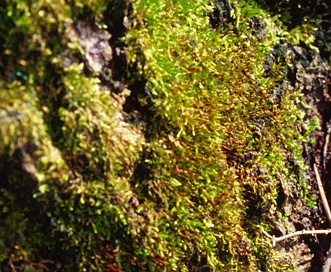
image from: https://www.flickr.com/photos/72842252@N04/8471706451/
Sematophyllum rivuletorum: The Fascinating Moss of Streams and Waterfalls

image from: https://www.pinterest.com/pin/cheriechisgarden-mossgardenbycheriechi-moss-sematophyllum-robustulumcardbroth–557390891371707469/
Introduction
Mosses are often overlooked, but they play important ecological roles in many habitats around the world. One particularly interesting moss species is Sematophyllum rivuletorum (Broth.) Broth., also known simply as Sematophyllum. This small but mighty moss is found growing near streams, waterfalls, and other wet areas. Let’s dive in and learn more about the riveting world of Sematophyllum rivuletorum!

image from: http://wildflowersearch.org/search?&tsn=16406
Background on Mosses
Mosses are small, non-vascular plants in the division Bryophyta. Unlike other plants, mosses lack true roots, stems, and leaves. Instead, they have leaf-like structures called phyllids and hair-like rhizoids that anchor them to surfaces. Mosses reproduce via spores rather than seeds and flowers.

image from: https://www.researchgate.net/figure/Figura-19-Sematophyllum-subfulvum-Broth-Broth-a-Aspecto-geral-do-gametofito-b_fig17_259822623

image from: https://nonvascularherbariumcollection.blogspot.com/2016/10/moss-1-pictures-are-stuck-on-computer.html
There are over 12,000 species of moss found all around the world, from the Arctic to the tropics. They play key roles in their ecosystems, helping with water and nutrient cycling, preventing erosion, and providing habitat for many tiny organisms.
Sematophyllum rivuletorum
Morphology and Identification
Sematophyllum rivuletorum is a pleurocarpous moss, meaning its sporophytes grow laterally from the stem. Its phyllids are ovate-lanceolate in shape and have a single costa (midrib) that extends 1/2 to 2/3 of the way up the phyllid. The phyllid margins are entire (smooth).
This moss is yellowish-green to golden-brown in color. Its stems can grow up to 5 cm long and are freely branched. Capsules are common and ovoid-cylindrical in shape.
Global Distribution and Habitat
S. rivuletorum has a pantropical distribution, found in tropical regions around the world including Central and South America, Africa, and Asia. It grows on rocks and tree bases near streams, rivers, and waterfalls in lowland to montane rainforests. The constant spray and humidity in these habitats provide the ideal conditions for this moss to thrive.

image from: https://www.researchgate.net/figure/Figura-4-Sematophyllum-campicolum-Broth-Broth-a-aspecto-geral-do-gametofito-com_fig3_237363226
Ecological Roles and Adaptations
Like other mosses, S. rivuletorum plays an important role in its ecosystem:
- Helps prevent soil erosion along stream banks
- Provides habitat for micro-organisms

image from: https://www.flickr.com/photos/72842252@N04/8472802484/
- Aids in nutrient and water cycling
- Serves as a bioindicator of water quality
This moss has several adaptations that allow it to flourish in its wet habitat:
- Thick, water-absorbing phyllids
- Rhizoids that cling tightly to rocks
- Ability to survive periodic submersion
- Reproduction via spores that can disperse by water

image from: https://www.flickr.com/photos/72842252@N04/8473069816/

image from: https://ohiomosslichen.org/sematophyllum-adnatum-2/
Conclusion
Sematophyllum rivuletorum is a prime example of how even the smallest organisms can have big ecological impacts. The next time you’re hiking near a tropical stream, take a closer look – you might just spot this amazing moss! What other overlooked species in nature have caught your interest?

image from: https://www.researchgate.net/figure/Sematophyllum-brachycarpum-A-Plants-B-Typical-shoot-with-leaves-C-Leaf-D-Leaf-base-with_fig10_333676887